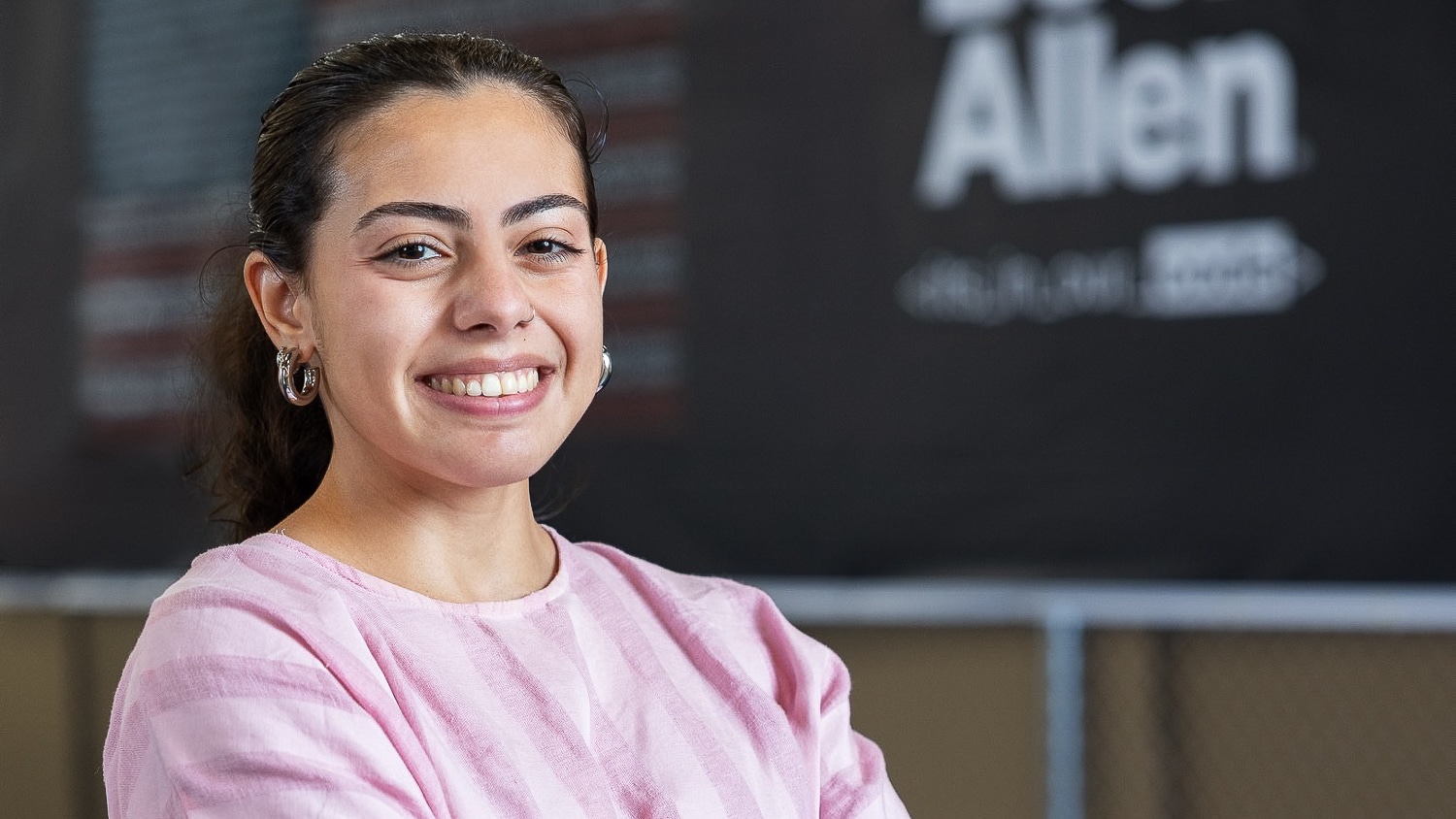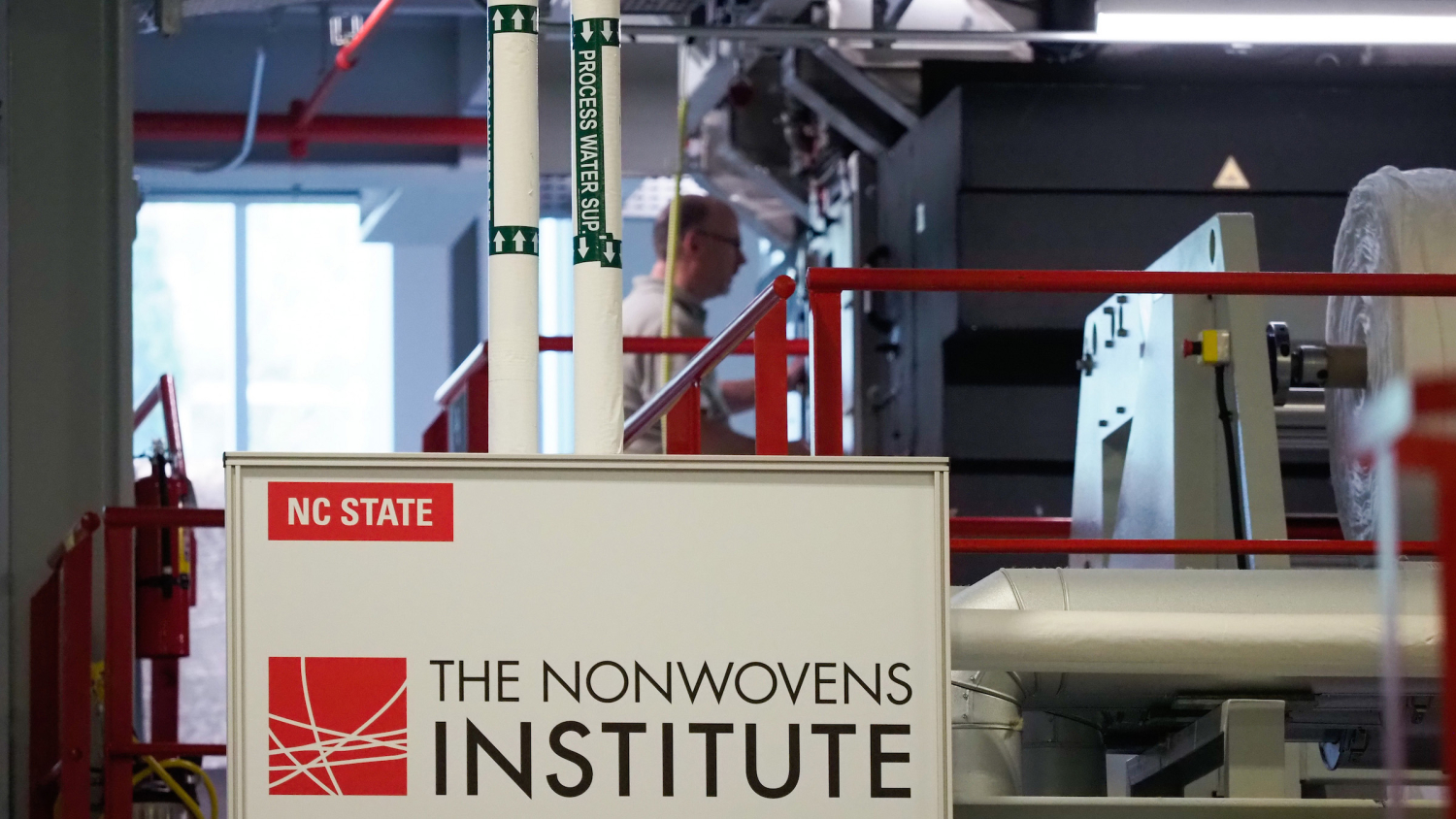Wilson College Expert Explains Evolving Face Covering Guidance

By Sarah Stone
As the Coronavirus pandemic changes, so does scientists’ understanding of how to best use face coverings to protect ourselves from the disease. That was one of the key messages Wilson College of Textiles Assistant Professor Bryan Ormond wanted his audience to take away from a presentation to the university about face coverings.
“It’s not necessarily [that the guidance on face coverings is] flip-flopping back and forth, it’s just responding to what’s actually happening in the world and specifically with the virus,” Ormond said.
Ormond, who has over a decade of research experience specializing in personal protective equipment (PPE), provided a thorough explanation of the science behind face coverings to NC State staff, faculty and students on February 2. He delved into how filtration works at the molecular level, the different factors of face covering efficacy, how different types of face coverings are tested and regulated, and how to spot counterfeit products. Additionally, Ormond shared his research group’s progress in testing face covering efficacy that takes movement of the head into account.
Below, read some of the principle takeaways from Ormond’s seminar. You can also watch it in fulI by clicking here or scrolling to the bottom of the page.
Masks don’t “just” protect others
Many types of face coverings can provide some level of both respiratory protection and source capture. Respiratory protection means that the air you breathe in is filtered, reducing your risk of exposure to the coronavirus. Source capture means that the air you breathe out is filtered, reducing the risk of exposure to the coronavirus for the people around you.
- Filtering facepiece respirators, or FFRs (N95, KN95, KF94 and FFP2), provide both respiratory protection and source capture.
- Barrier face coverings (knit or woven face coverings made out of a variety of materials) as well as surgical and procedural masks (think of the blue, non-woven masks many people wear) for the most part provide only source capture. However, even these masks still provide varying degrees of respiratory protection!
“We don’t ‘prevent’ anything. It’s all about minimizing the exposure, reducing the possibility that you could be exposed to something.”
– Assistant Professor Bryan Ormond
Face coverings are your last line of defense, not your only form of defense
Masks were never intended to work alone as a 100% preventative measure against contracting or spreading airborne infectious diseases like the Coronavirus. Instead, this measure is supposed to be layered on top of other proven preventative measures, such as social distancing and vaccination, to minimize the likelihood of contracting the virus.
All face coverings “work”
That means if you wore a face covering but you still contracted the virus, it doesn’t mean that the mask didn’t “work.”
“How do you define ‘work’? That’s incredibly important, because you have to understand – what are you asking these products to do? With all PPE, you have to understand what you’re asking that product to do. And it’s really important to understand,” Ormond explained. “And in this case, if you are asking a mask to serve as stopping and preventing any possible transmission of COVID to you whatsoever, then I hate to tell you – no mask is going to do that. We don’t ‘prevent’ anything. It’s all about minimizing the exposure, reducing the possibility that you could be exposed to something.”
Your definition of a face covering “working” will probably include unique combinations and prioritizations of factors such as:
- Fit.
- Breathability.
- Level of respiratory protection.
- Level of source capture.
Fit is crucial
Even if you are wearing a mask made of material that has been tested and proven to be highly effective at filtering the particles you’re breathing in and those you’re breathing out, that mask will be highly ineffective with a poor fit. That’s because unfiltered air can easily leak in or out through any gaps in the fit of your mask.
It’s better to wear a mask with somewhat poorer filtration quality but proper fit than to wear one with top notch filtration but a poor fit. The good news? Brackets, fitters and varying mask designs exist to help you achieve the best overlap of fit and filtration.
Different types of testing, regulation exist for different types of face coverings in the U.S.
- N95s are regulated by the National Institute for Occupational Safety and Health (NIOSH). As the name suggests, this testing comes from an occupational perspective, such as construction or toxic waste management.
- Surgical or procedural masks are regulated by the Food and Drug Administration (FDA) within the context of employees working in the health care industry.
- The standards for barrier face coverings are set by the Centers for Disease Control and Prevention (CDC) based on the standards developed during the pandemic by ASTM. Ormond was a member of the subcommittee that developed those standards.
Some basic differences exist between N95, KN95, KF94 and FFP2 masks
All of these masks fall within the category of filtering facepiece respirators(FFRs). Each type is regulated differently and by a different country.
- N95s are regulated in the U.S. by NIOSH.
- KN95s’ standards are set by a Chinese government agency. However, KN95 manufacturers are not regulated to the same degree as with N95s or KF94s. They may not have their masks tested and approved by that agency before they begin production.
- KF94s are regulated by South Korea’s Ministry of Food and Drug Safety. Ormond says these masks are highly regulated and considers them to be high quality products.
- FFP2s are regulated by European government agencies.
The minimum filter performance that these types of masks must meet ranges from 94% to 95%. Filter performance is a measure of what percent of particles penetrate the mask. For example, for a mask with 95% filter performance, 5% of particles managed to penetrate the mask in testing.
Rewatch the full seminar below
- Categories:


